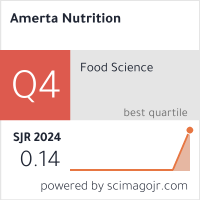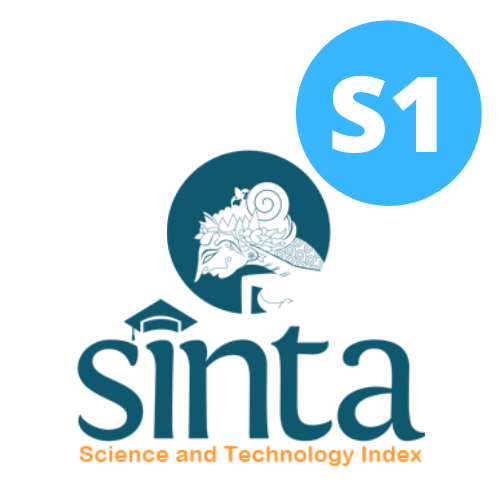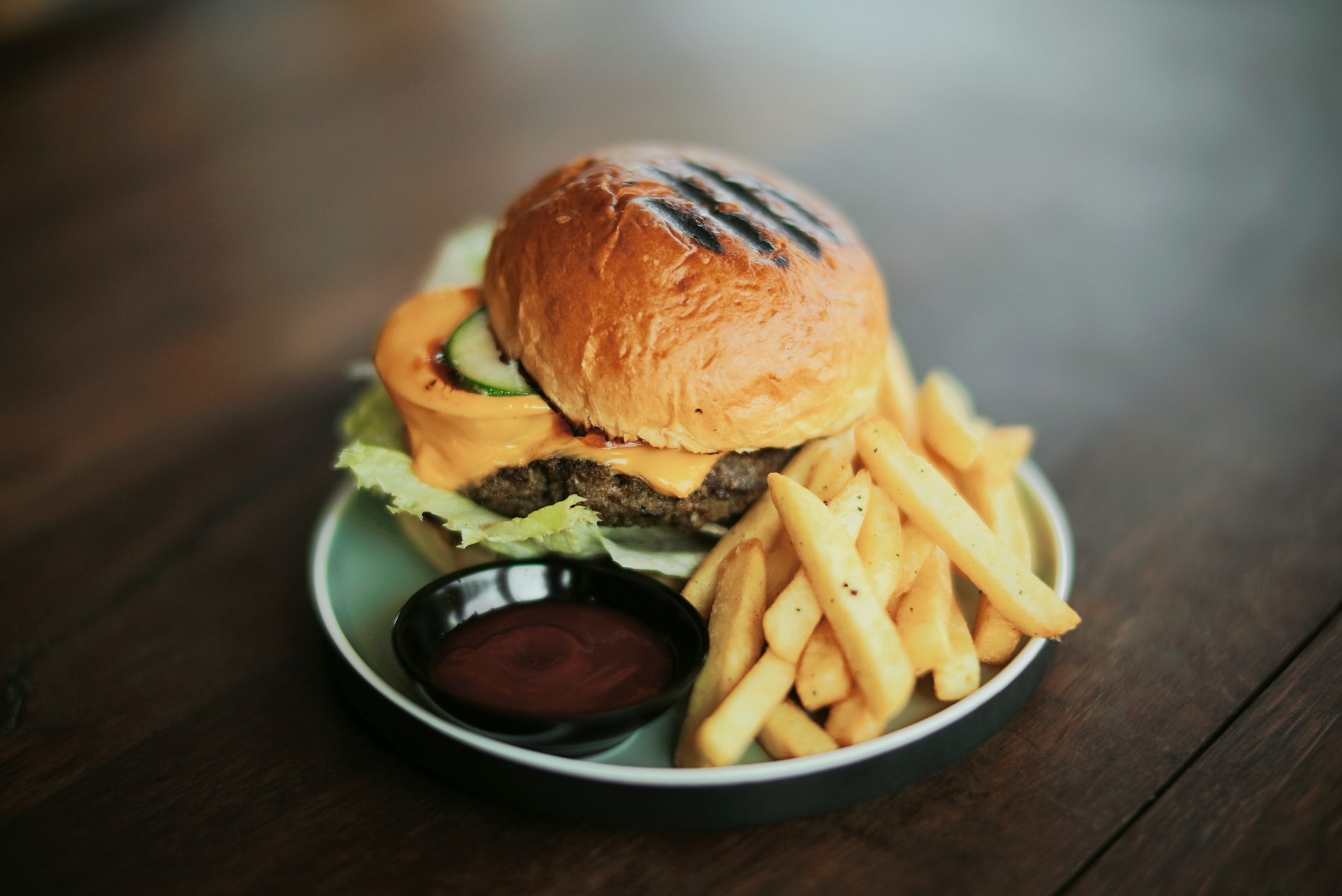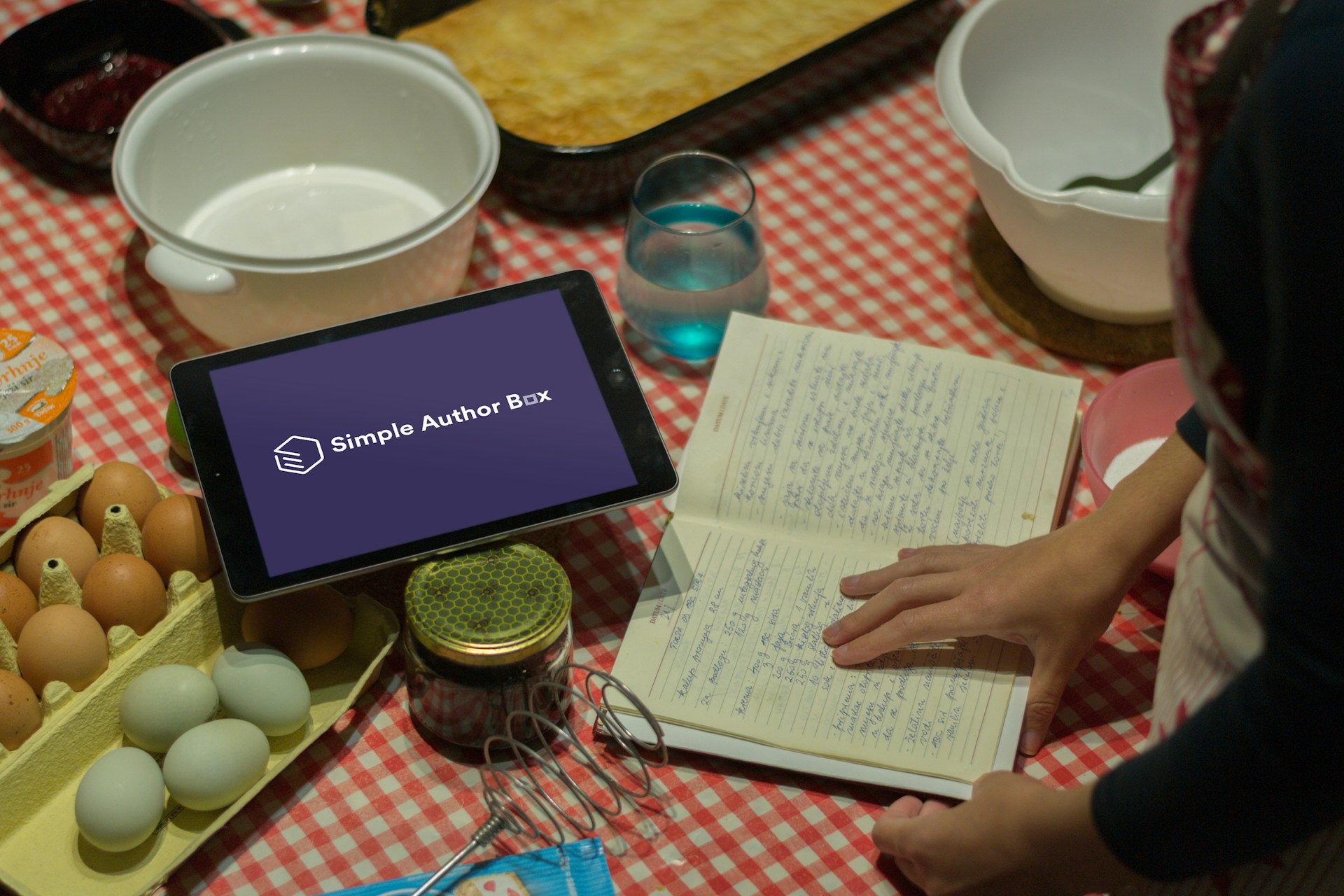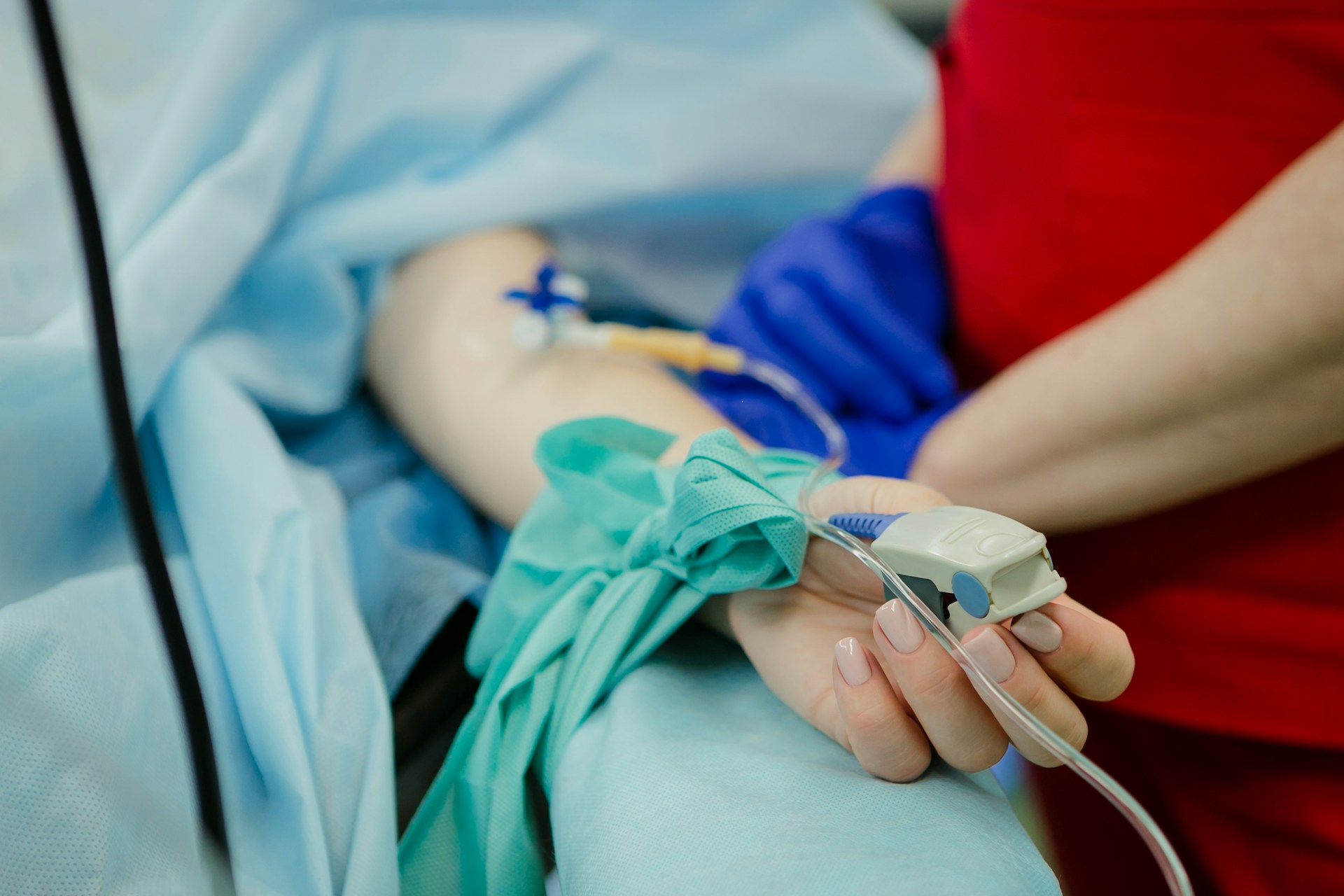Sensory Profiling of Jelly Drink Made from a Combination of Bay Leaf Water Extract and Guava Juice Using a Quantitative Descriptive Analysis
Profil Sensori Minuman Jeli Ekstrak Air Daun Salam Kombinasi Jus Jambu Menggunakan Quantitative Descriptive Analysis
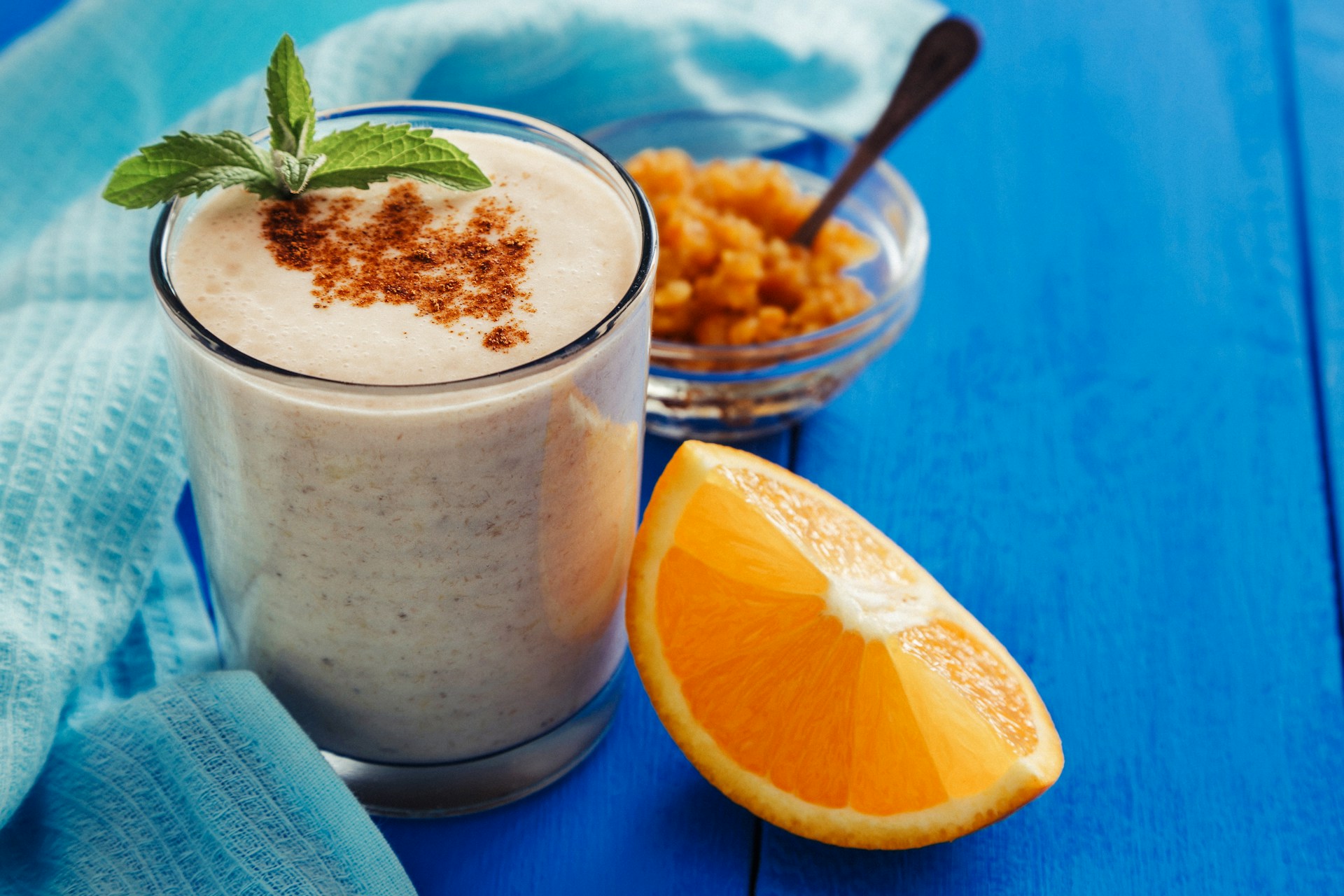
Downloads
Background: The profiling of a drink made from bay leaves combined guava juice has not been previously reported despite the positive health aspects of both plants.
Objectives: To analyze the sensory characteristics of jelly drink bay leaf water extract with guava juice combination using the Quantitative Analysis Descriptive (QDA) sensory evaluation method.
Methods: The QDA carried out of three stages, namely the panelist preparation stage, Forum Group Discussion (FGD), and quantitative descriptive test. QDA was carried out on four jelly drink product formulas, namely F0 (standard), F1 (75:25), F2 (50:50), F3 (25:75) from the ratio of bay leaf extract:guava juice.
Results: Sensory attributes consist of 17 attributes, namely appearance (particle aggregation size, viscosity, homogeneity), aroma (bay leaf, guava, sweet), texture (gritty, ease of spreading), taste (guava, sweet, sour, bay leaf), mouthfeel (gritty, jelly-like consistency, viscosity), aftertaste (astringent and bitter). The results of the one-way ANOVA analysis showed significant differences between the formula and the control product (p<0.05). Formula 1 and 3 not accepted by consumers because there are weaknesses, such as the inhomogeneous appearance and the strong aroma of bay leaf obtained the highest value in formula 1. In contrast, formula 3 has the highest value in astringent and bitter aftertaste, gritty texture and mouthfeel.
Conclusions: The selected treatment is formula two of jelly drink with a ratio of bay leaf water extract: guava juice = 50:50. A description like this will assist food technology in developing new products.
INTRODUCTION
In recent years, consumer demand for healthy and functional beverages has increased significantly. The jelly drink is a popular and well-liked type of nutritious beverage among a wide range of people1. Due to its low calorie, low fat, and high fiber content2. The jelly drink has a soft gel-like consistency, making it convenient to consume as a beverage3. A jelly drink was produced by bay leaf water extract combining guava juice and glucomannan. This resulted in the production of value- added and functional foods and a gel with an improved texture, have become one of the products attracting attention in the market.
Bay leaf contains various active components that can regulate the function of insulin, glucose, and lipid metabolism4;5;6;7;8;9;10;11. Bay leaf polyphenols and flavonoids can prevent or alleviate metabolic disorders and regulate body composition12. Phytonutrients and their bioactive compounds can decrease the risk of developing chronic diseases and enhance their control when consumed as part of a well-balanced diet13.
The guava fruit possesses significant potential due to its exceptional nutritional value, pleasing taste, palatability, and availability at a reasonable cost14. The significant antioxidant activity of guava fruit is responsible for its anti-hyperglycemic effect. The guava fruit holds promise for creating dietary supplements specially designed for individuals with diabetes15. Guava fruit can inhibit oxidative damage and reduce inflammation-induced high blood sugar levels linked to long-term complications of diabetes16. The water extract from guava fruit shows potential as a suitable option for functional beverages in individuals with prediabetes and diabetes17. Guava has become a popular ingredient in the food industry, especially in Japan and China, where it is used to produce healthy beverages18.
The profiling of a food product or beverage created by combining bay leaves and guava juice has not been documented despite the known health benefits of both plants. Hence, there is an immediate need for comprehensive research aimed at creating jelly beverages that align with consumer preferences. This study used a group of trained panelists to analyze and describe the main sensory profiling. The discussion also includes the performance of the panelists in conducting tests and the reliability of the tests. Furthermore, assessments of the jelly drink's performance are conducted about its existing competitors. This study aimed to analyze the sensory profiling of a jelly drink made from a combination of bay leaf water extract and guava juice using the QDA sensory evaluation method.
Images 1.Procedure of bay leaf water extract and guava juice
METHODS
Materials
The raw materials utilized included mature bay leaves (Syzygium polyanthum) harvested from the fifth leaf of the shoots19and fresh red guava (Psidium guajava) fruits of optimal maturity20. Free from any indications of mold, pests, or diseases. The United States Department of Agriculture identified the plant, and a nomen number was assigned to each plant: bay leaf and fresh red guava, 84449 and 27240, respectively. The raw material was obtained from Pemberdayaan and Kesejahteraan Keluarga (PKK) Agropark Lampung, Sabah Balau, South Lampung Regency, Lampung (latitude 5°22'39.1"S, longitude 105°19'07.8"E). Ikarie from Yogyakarta is the producer of glucomannan, while Shandong Shengxiangyuan Biotechnology Co., Ltd produces stevia extract powder. The company PT. Golden Sinar Sakti in Indonesia produces citric acid. All components are classified as Generally Recognized As Safe (GRAS)20. The tools used are wooden booths, plastic bottles, servings, trays, plastic spoon, pen, questionnaire.
Procedure
The QDA procedure carried out in this study broadly consists of three stages: panelist preparation stage, FGD, and quantitative descriptive test21;22. Bay leaf water extract using decocted method and guava juice using water extraction, procedure can be seen in theImages 1. The development of jelly drink formulas refers to early studies23, with the addition of glucomannan (1 g/L of water; 0.1%) and stevia (0.75 g/L of water; 0.075%), citric acid was added until the pH level reached 4.6, at a concentration of 0.05%. The beverage was heated for a duration of 10 minutes at a temperature of 90°C.
QDA was carried out on four jelly drink product formulas, namely F0 (standard product made from guava juice with a ratio of guava: water = 1:2 and the addition of 0.075% stevia), F1 (jelly drink bay leaf water extract combination with guava juice with a ratio of 75:25), F2 (50:50), F3 (25:75), which can be seen in theImages 2. As many as eight trained panelists participated in the QDA test aged 20 – 35 years. Panelists were recruited based on experience conducting sensory tests and their interest, willingness, and accustoming to consuming herbal drinks or fruit juices. Panelists were trained, and products were evaluated using descriptive sensory analysis with the QDA method. The exclusion include smoker, pregnant and allergy, allergic to consuming herbs and fruits. The descriptive sensory test result data is presented in a standard radar graph.
Images 2.Four jelly drink product formulas
Panelist Preparation
The eight trained panelists involved in this study were qualified by having attended and graduated from sensory attribute analysis training and certificates of completion as proof. They come from various backgrounds, including undergraduate and graduate students and alums of the Department of Community Nutrition and laboratory and academic staff of the Department of
Gani, Y. F., Indarto, T., Suseno, P. & Surjoseputro, S. Perbedaan Konsentrasi Karagenan Terhadap Sifat Fisikokimia dan Organoleptik Jelly Drink Rosela-Sirsak (Differences of carrageenan concentration on physicochemical and organoleptic properties of rosella-soursop jelly drink). J. Food Technol. Nutr. 13, 87–93 (2014).
Kraak, V. I., Englund, T., Misyak, S. & Serrano, E. L. A novel marketing mix and choice architecture framework to nudge restaurant customers toward healthy food environments to reduce obesity in the United States. Obes. Rev. 18, 852–868 (2017).
Kiranawati, T. M., Mariana, R. R. & Efrinasari, N. the Effect of Carrageenan and Lemon Ratio on Antioxidant Activity and Physical Properties of Jelly Butterfly Pea. J. Agroindustri 12, 29–38 (2022).
Sulastri, L. et al. Antidiabetic Formulation Development Based on Natural Materials As α-Glucosidase Enzyme Inhibitor. J. Hunan Univ. Nat. Sci. 49, 228–238 (2022).
Kooti, W., Farokhipour, M., Asadzadeh, Z., Ashtary-Larky, D. & Asadi-Samani, M. The role of medicinal plants in the treatment of diabetes: a systematic review. Electron. physician 8, 1832–1842 (2016).
Hanhineva, K. et al. Impact of dietary polyphenols on carbohydrate metabolism. Int. J. Mol. Sci. 11, 1365–1402 (2010).
Ali Asgar, M. Anti-diabetic potential of phenolic compounds: A review. Int. J. Food Prop. 16, 91–103 (2013).
Dias Soares, J. M., Leal, A. E. B. P., Silva, J. C., Almeida, J. R. G. S. & Pequeno de Oliveira, H. Bioautography-based Identification of Antioxidant Metabolites of Solanum nigrum L. and Exploration Its Hepatoprotective Potential agChester, K. et al. (2017) ‘Bioautography-based Identification of Antioxidant Metabolites of Solanum nigrum L. and Explorati. Pharmacogn. Mag. 13 (Suppl, 179–188 (2017).
Chen, L. et al. Anti-diabetic and anti-obesity: Efficacy evaluation and exploitation of polyphenols in fruits and vegetables. Food Res. Int. 157, (2022).
Khan, A., Zaman, G. & Anderson, R. A. Bay leaves improve glucose and lipid profile of people with type 2 diabetes. J. Clin. Biochem. Nutr. 44, 52–56 (2009).
Chbili, C. et al. Evaluation of Daily Laurus nobilis Tea Consumption on Lipid Profile Biomarkers in Healthy Volunteers. J. Am. Coll. Nutr. 39, 733–738 (2020).
Dobroslavić, E., Elez Garofulić, I. & Ilich, J. Z. Potential of Laurel (Laurus nobilis L.) Leaf Polyphenols for Modulation of Body Composition. Appl. Sci. 13, (2023).
Khaled Khodja, Y. et al. The botanical study, phytochemical composition, and biological activities of Laurus nobilis L. leaves: A review. Int. J. Second. Metab. 10, 269–296 (2023).
M. Kadam, D., Kaushik, P. & Kumar, R. Evaluation of Guava Products Quality. Int. J. Food Sci. Nutr. Eng. 2, 7–11 (2012).
Sun, C. et al. Anti-diabetic effects of natural antioxidants from fruits. Trends Food Sci. Technol. 117, 3–14 (2021).
Li, P. Y. et al. Protective effects of red guava on inflammation and oxidative stress in streptozotocin-induced diabetic mice. Molecules 20, 22341–22350 (2015).
Simamora, A., Paramita, L., Hamid, N. A. B. M., Santoso, A. W. & Timotius, K. H. In vitro antidiabetic and antioxidant activities of aqueous extract from the leaf and fruit of Psidium guajava L. Indones. Biomed. J. 10, 156–164 (2018).
Jiao, Y., Hua, D., Huang, D., Zhang, Q. & Yan, C. Characterization of a new heteropolysaccharide from green guava and its application as an α-glucosidase inhibitor for the treatment of type II diabetes. Food Funct. 9, 3997–4007 (2018).
Syabana, M. A., Yuliana, N. D., Batubara, I. & Fardiaz, D. α-glucosidase inhibitors from Syzygium polyanthum (Wight) Walp leaves as revealed by metabolomics and in silico approaches. J. Ethnopharmacol. 282, 114618 (2022).
Fereidoon, S. & Cesarettin, A. Handbook of Functional Beverages and Human Health. Handbook of Functional Beverages and Human Health (2016). doi:10.1201/b19490.
Kemp, S. E., Hort, J. & Hollowood, T. Descriptive Analysis in Sensory Evaluation. วารสารวิชาการมหาวิทยาลัยอีสเทิร์นเอเชีย vol. 4 (Wiley Blackwell, 2018).
Meilgaard, M., Civille, G. & Carr, B. Sensory Evaluation Techniques. Sensory Evaluation Techniques (CRC Press, 2007). doi:10.1201/b19493-13.
Putri, S., Anna, S., Budi, M. & Rimbawan, S. Development Of Jelly Drink Bay Leaf Water Extract With Guava Juice Combination. 24, 199–205 (2023).
Chen, X. et al. Effects of Pectinase Pre-Treatment on the Physicochemical Properties, Bioactive Compounds, and Volatile Components of Juices from Different Cultivars of Guava. Foods 12, (2023).
Kavaya, I. QUALITY CHARACTERISTICS OF FRUIT JAMS AND MARMALADES CONTAINING GUM ARABIC FROM Acacia senegal var. Kerensis. Range Management and Agroforestry vol. 4 (EGERTON UNIVERSITY, 2020).
Herbie, T. Kitab tanaman berkhasiat obat 226 tumbuhan obat untuk penyembuhan penyakit dan kebugaran tubuh. (Yogyakarta OCTOPUS Publishing House, 2015).
Evendi, A. Uji Fitokimia Dan Anti Bakteri Ekstrak Daun Salam (Syzygium Polyanthum) Terhadap Bakteri Salmonella Typhi dan Escherichia Coli Secara In Vitro. Mahakam Med. Lab. Technol. J. II, 1–9 (2017).
Silalahi, M. Syzygium polyanthum (Wight) Walp.(Botani, Metabolit Sekunder dan Pemanfaatan). J. Din. Pendidik. 10, 1–16 (2017).
Wang, N., Dong, Y., Wang, S., Waang, J. & Wu, N. Changes in nutritional and antioxidant properties, structure, and flavor compounds of Tartary buckwheat (Fagopyrum tataricums) sprouts during domestic cooking. Int. J. Gastron. Food Sci. 36, (2024).
Chang, Y. P., Woo, K. K. & Gnanaraj, C. Pink guava. Valorization of Fruit Processing By-products (Elsevier Inc., 2020). doi:10.1016/B978-0-12-817106-6.00011-3.
Gebeyehu Ewunetu, M. & Wondmagegni Molla, S. Production and characterization of mixed fruit juice from papaya, mango and guava fruit Production and characterization of mixed fruit juice from papaya, mango, and guava fruit. African J. Food Sci. Technol. 13, 1–05 (2022).
Patel, M. et al. Descriptive aroma profiles of fresh sweet basil cultivars (Ocimum spp.): Relationship to volatile chemical composition. J. Food Sci. 86, 3228–3239 (2021).
Ahmad, J., Khan, I., Blundell, R., Azzopardi, J. & Mahomoodally, M. F. Stevia rebaudiana Bertoni.: an updated review of its health benefits, industrial applications and safety. Trends Food Sci. Technol. 100, 177–189 (2020).
Irshad, Z., Hanif, M. A., Ayub, M. A., Jilani, M. I. & Tavallali, V. Guava. Med. Plants South Asia Nov. Sources Drug Discov. 341–354 (2019) doi:10.1016/B978-0-08-102659-5.00026-4.
Cardoso, P. C. et al. Development and application of a liquid chromatography-mass spectrometry method for the determination of sugars and organics acids in araza, ceriguela, guava, mango and pitanga. Brazilian J. Food Technol. 24, 1–14 (2021).
Zhan, L. et al. Mastering textural control in multi-polysaccharide gels: Effect of κ-carrageenan, konjac glucomannan, locust bean gum, low-acyl gellan gum, and sodium alginate. Int. J. Biol. Macromol. 254, 127885 (2024).
Hashim, M. S. & Ismail, F. A. Innovation And Influence Of Storage Temperature On Viscosity , Colour , Emulsion And Vitamin E Stability Of Pink. 5, 65–79 (2023).
Zheng, J. et al. Gelling mechanism of RG-I enriched citrus pectin: Role of arabinose side-chains in cation- and acid-induced gelation. Food Hydrocoll. 101, 105536 (2020).
Shanker, M. A. et al. Insights on the astringency of non alcoholic bevearges: Fruit, vegetable & plantation based perspective. Food Chem. Adv. 4, 100630 (2024).
Yousaf, A. A. et al. Storage stability assessment of guava fruit (Psidium guajava L.) cv. ‘Gola’ in response to different packaging materials. Sustain. Food Technol. 2, 210–221 (2023).
Sarkar, T. et al. Minor tropical fruits as a potential source of bioactive and functional foods. Crit. Rev. Food Sci. Nutr. 63, 6491–6535 (2023).
Næs, T., Tomic, O., Endrizzi, I. & Varela, P. Principal components analysis of descriptive sensory data: Reflections, challenges, and suggestions. J. Sens. Stud. 36, (2021).
Nguyen, Q. C., Næs, T., Almøy, T. & Varela, P. Portion size selection as related to product and consumer characteristics studied by PLS path modelling. Food Qual. Prefer. 79, 103613 (2020).
Varghese, C. & Srivastav, P. P. Formulation and sensory characterization of low-cost, high-energy, nutritious cookies for undernourished adolescents: An approach using linear programming and fuzzy logic. Innov. Food Sci. Emerg. Technol. 75, 102904 (2022).
Copyright (c) 2024 Amerta Nutrition

This work is licensed under a Creative Commons Attribution-ShareAlike 4.0 International License.
AMERTA NUTR by Unair is licensed under a Creative Commons Attribution-ShareAlike 4.0 International License.
1. The journal allows the author to hold the copyright of the article without restrictions.
2. The journal allows the author(s) to retain publishing rights without restrictions
3. The legal formal aspect of journal publication accessibility refers to Creative Commons Attribution Share-Alike (CC BY-SA).
4. The Creative Commons Attribution Share-Alike (CC BY-SA) license allows re-distribution and re-use of a licensed work on the conditions that the creator is appropriately credited and that any derivative work is made available under "the same, similar or a compatible license”. Other than the conditions mentioned above, the editorial board is not responsible for copyright violation.






